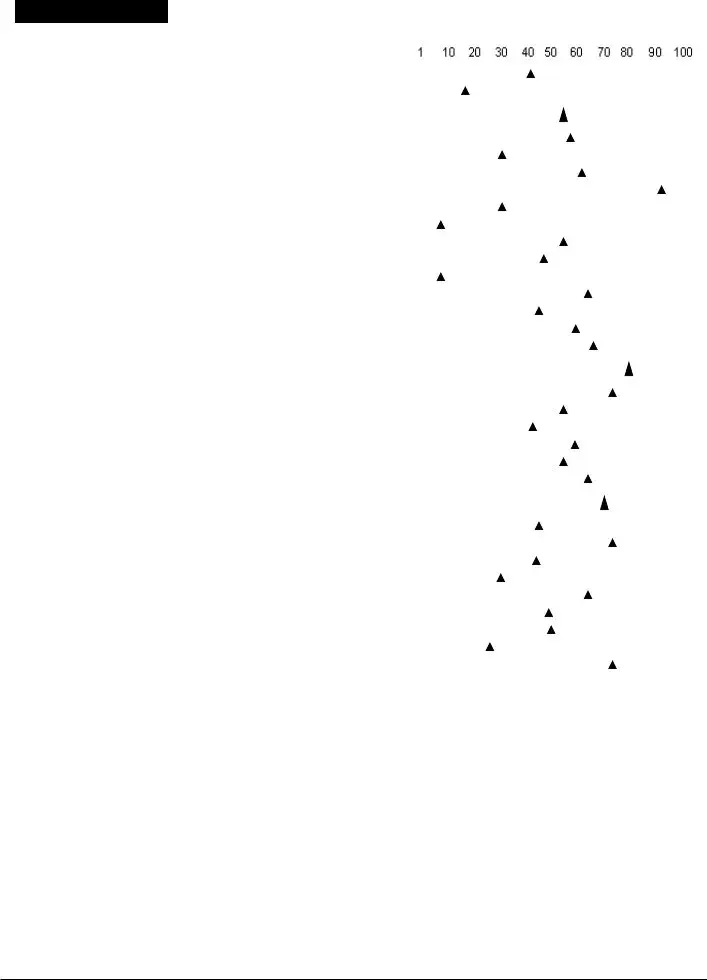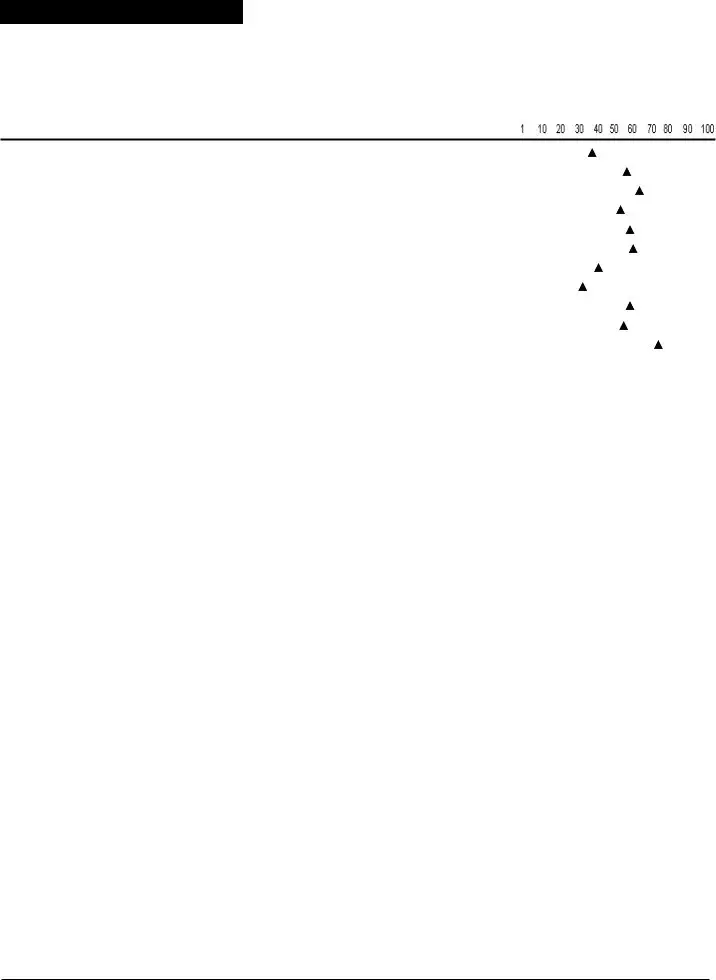In an era where child health care continues to evolve, the RN Nursing Care of Children 2013 B form plays a critical role in assessing the proficiency of nursing students in various key areas of pediatric nursing. This comprehensive evaluation tool, as detailed in the document, provides a snapshot of a group’s performance in safety and infection control, health promotion and maintenance, psychosocial integrity, and other essential dimensions of nursing care for children. The form breaks down the group's performance across different proficiency levels, from Level 1 to Level 3, and even those scoring below Level 1, offering a nuanced view of the group’s understanding and readiness. With a specific focus on Chattahoochee Valley State Community College's Associate Degree Nursing (ADN) program, it offers insights into both individual and collective performance metrics compared to national benchmarks. Furthermore, it delineates areas needing improvement, such as understanding safety and infection control protocols, health promotion strategies across childhood stages, and managing psychosocial integrity. The detailed breakdown of sub-scale items and scores in areas like pharmacological and parenteral therapies, reduction of risk potential, and physiological adaptation, among others, also highlights the critical thinking skills required in pediatric nursing. Whether it's mastering dosage calculations, understanding the nuances of medication administration, or recognizing signs of physiological adaptation, this form offers an invaluable overview of the competencies future nurses need to ensure the well-being of children under their care.
| Question | Answer |
|---|---|
| Form Name | Rn Nursing Care Of Children 2013 B |
| Form Length | 7 pages |
| Fillable? | No |
| Fillable fields | 0 |
| Avg. time to fill out | 1 min 45 sec |
| Other names | ati pediatrics proctored 2019, rn nursing care of children online practice 2019 b, ati pediatrics proctored exam 2019, ati peds proctored exam 2019 test bank |

Group Performance Profile
RN Nursing Care of Children 2010 Form B
Assessment #: |
3914332 |
Adjusted Group Score: |
53.8% |
Institution: |
Chattahoochee Valley State |
% of Group Meeting |
|
|
CC Phenix City ADN |
Institution Benchmark: |
N/A |
|
|
||
Program Type: |
ADN |
|
|
Group Size: |
11 |
|
|
Test Date: |
4/19/2012 |
|
|
# of Questions: |
60 |
|
|
|
|
|
|
Group Performance Summary Table
ATI |
Individual |
% and # of |
Proficiency |
Score Required |
Group at |
Level |
for Proficiency |
Proficiency |
|
Level |
Level |
|
|
|
Level 3 |
73.3% - 100.0% |
9.1% (1) |
|
|
|
Level 2 |
63.3% - 71.7% |
9.1% (1) |
|
|
|
Level 1 |
50.0% - 61.7% |
54.5% (6) |
|
|
|
Below Level 1 |
<50.0% |
27.3% (3) |
|
|
|
Note: ATI Proficiency Levels pertain to individual scores only. Group scores are not classified by proficiency level.
Individual Mean- |
Individual Mean- |
National |
Program |
59.5% |
59.9% |
|
|
% of Group Above |
% of Group Above |
Individual Mean- |
Individual Mean- |
National |
Program |
27.3% |
27.3% |
|
|
Group Performance in the Major Content Areas
|
# |
Group |
|
Items |
Score |
||
|
|
|
|
Safety and Infection Control |
3 |
42.4% |
|
|
|
|
|
Health Promotion and Maintenance |
7 |
57.1% |
|
|
|
|
|
Psychosocial Integrity |
2 |
31.8% |
|
|
|
|
|
Basic Care and Comfort |
5 |
47.3% |
|
|
|
|
|
Pharmacological and Parenteral Therapies |
9 |
65.7% |
|
|
|
|
|
Reduction of Risk Potential |
15 |
58.8% |
|
|
|
|
|
Physiological Adaptation |
19 |
44.5% |
|
|
|
|
|
NOTE: Means and percentile ranks are not presented for
Please see page 7 for an explanation of the Scores and Topics to Review sections |
Page 1 of 7 |
Report Created on: 6/25/2012 10:38 AM CDT |
REP_COMP_3_0_GroupProctored_3_0 |

Group Scores
|
# |
Group |
Group Score (% correct) |
Items |
Score |
|
|
|
|
|
|
Safety and Infection Control |
3 |
42.4% |
|
|
|
|
|
Accident/Injury Prevention |
1 |
18.2% |
|
|
|
|
|
Standard |
2 |
54.5% |
|
Precautions/Surgical Asepsis |
|
|
|
|
|
|
|
Health Promotion and Maintenance |
7 |
57.1% |
|
|
|
|
|
Aging Process |
2 |
31.8% |
|
|
|
|
|
Developing Stages and Transitions |
4 |
61.4% |
|
|
|
|
|
Health and Wellness |
1 |
90.9% |
|
|
|
|
|
Psychosocial Integrity |
2 |
31.8% |
|
|
|
|
|
Abuse/Neglect |
1 |
9.1% |
|
|
|
|
|
Family Dynamics |
1 |
54.5% |
|
|
|
|
|
Basic Care and Comfort |
5 |
47.3% |
|
|
|
|
|
Elimination |
1 |
9.1% |
|
|
|
|
|
Mobility/Immobility |
1 |
63.6% |
|
|
|
|
|
Nonpharmacological Comfort Interventions |
1 |
45.5% |
|
|
|
|
|
Nutrition and Oral Hydration |
2 |
59.1% |
|
|
|
|
|
Pharmacological and Parenteral Therapies |
9 |
65.7% |
|
|
|
|
|
Adverse Effects/Contraindications/Side |
3 |
78.8% |
|
Effects/Interactions |
|
|
|
|
|
|
|
Dosage Calculation |
2 |
72.7% |
|
|
|
|
|
Expected Actions/Outcomes |
1 |
54.5% |
|
|
|
|
|
Medication Administration |
3 |
43.2% |
|
|
|
|
|
Reduction of Risk Potential |
15 |
58.8% |
|
|
|
|
|
Laboratory Values |
3 |
54.5% |
|
|
|
|
|
Potential for Alterations in Body Systems |
1 |
63.6% |
|
|
|
|
|
Potential for Complications of Diagnostic |
3 |
69.7% |
|
Tests/Treatments/Procedures |
|
|
|
|
|
|
|
System Specific Assessment |
5 |
45.5% |
|
|
|
|
|
Therapeutic Procedures |
3 |
72.7% |
|
|
|
|
|
Physiological Adaptation |
19 |
44.5% |
|
|
|
|
|
Alterations in Body Systems |
8 |
31.3% |
|
|
|
|
|
Hemodynamics |
1 |
63.6% |
|
|
|
|
|
Illness Management |
4 |
49.1% |
|
|
|
|
|
Medical Emergencies |
2 |
50.0% |
|
|
|
|
|
Pathophysiology |
3 |
27.3% |
|
|
|
|
|
Unexpected Response to Therapies |
1 |
72.7% |
|
|
|
|
|
Please see page 7 for an explanation of the Scores and Topics to Review sections |
Page 2 of 7 |
Report Created on: 6/25/2012 10:38 AM CDT |
REP_COMP_3_0_GroupProctored_3_0 |

Topics To Review
% of students answering the Item Correctly
Safety and Infection Control (3 items)
Accident/Injury Prevention (1 item) |
|
|
|
Seizures: Precautions |
18.2% |
|
|
Standard |
|
|
|
Meningitis and Reye Syndrome: Isolation Precautions |
18.2% |
|
|
Acute Infectious Gastrointestinal Disorders: Isolation Precautions |
90.9% |
Health Promotion and Maintenance (7 items)
Aging Process (2 items) |
|
|
|
Health Promotion of the Infant (Birth to 1 Year): Parent Education |
18.2% |
|
|
Health Promotion of the Infant: Sun Protection |
45.5% |
|
|
Developing Stages and Transitions (4 items) |
|
|
|
Health Promotion of the Infant: Assessment of Motor Development |
18.2% |
|
|
Health Promotion of the Adolescent: Nutrition Guidelines |
54.5% |
|
|
Health Promotion of the Toddler: Normal Development |
72.7% |
|
|
Health Promotion of the Infant (Birth to 1 Year): Recognizing Developmental Delays |
100.0% |
|
|
Health and Wellness (1 item) |
|
|
|
Immunizations: Side Effects of Influenza |
90.9% |
Psychosocial Integrity (2 items)
Abuse/Neglect (1 item) |
|
|
|
Psychosocial Issues of Infants, Children, and Adolescents: Abuse |
9.1% |
|
|
Family Dynamics (1 item) |
|
|
|
Health Promotion of the Preschooler: Appropriate Discipline |
54.5% |
Basic Care and Comfort (5 items)
Elimination (1 item) |
|
|
|
Structural Disorders of the Genitourinary Tract and Reproductive System: Plan of Care |
9.1% |
|
|
Mobility/Immobility (1 item) |
|
|
|
Musculoskeletal Congenital Disorders: Hip Dysplasia |
63.6% |
|
|
Nonpharmacological Comfort Interventions (1 item) |
|
|
|
Pain Management: Non Pharmacologic Strategies |
45.5% |
|
|
Nutrition and Oral Hydration (2 items) |
|
|
|
Gastrointestinal Structural and Inflammatory Disorders: Phenylketonuria |
36.4% |
|
|
Health Promotion of the Infant: Caloric Intake |
81.8% |
Pharmacological and Parenteral Therapies (9 items)
|
Adverse Effects/Contraindications/Side Effects/Interactions (3 items) |
|
|
|
|
|
|
|
Structural Disorders of the Genitourinary Tract and Reproductive System: Corticosteroid Use |
63.6% |
|
|
|
|
|
|
Safe Administration of Medication: Diuretics |
72.7% |
|
|
|
|
|
|
Diabetes Mellitus: Prevention of Complications |
100.0% |
|
|
|
|
|
|
Dosage Calculation (2 items) |
|
|
|
|
|
|
|
Safe Administration of Medication: Dosage Calculation |
54.5% |
|
|
|
|
|
|
Safe Administration of Medication: Dosage Calculation |
72.7% |
|
|
|
|
|
|
Expected Actions/Outcomes (1 item) |
|
|
|
|
|
|
|
Hematologic Disorders: Medication Regimen |
54.5% |
|
|
|
|
|
|
Medication Administration (3 items) |
|
|
|
|
|
|
|
Asthma: Aerosol Therapy |
36.4% |
|
|
|
|
|
|
Cardiovascular Disorders: Safe Administration of Medication |
63.6% |
|
|
|
|
|
Please see page 7 for an explanation of the Scores and Topics to Review sections |
Page 3 of 7 |
||
Report Created on: 6/25/2012 10:38 AM CDT |
REP_COMP_3_0_GroupProctored_3_0 |

Topics To Review
|
|
% of students |
|
|
|
answering the |
|
|
|
Item Correctly |
|
|
Safe Administration of Medication: Intramuscular Injection Sites |
72.7% |
|
|
|
|
|
|
Reduction of Risk Potential (15 items) |
|
|
|
Laboratory Values (3 items) |
|
|
|
|
|
|
|
Meningitis and Reye Syndrome: Expected Lab Values |
18.2% |
|
|
|
|
|
|
Pediatric Emergencies: Identifying Abnormal Laboratory Values |
54.5% |
|
|
|
|
|
|
Diabetes Mellitus: Nonadherence |
90.9% |
|
|
|
|
|
|
Potential for Alterations in Body Systems (1 item) |
|
|
|
|
|
|
|
Cystic Fibrosis: Providing Teaching to Prevent Complications |
63.6% |
|
|
|
|
|
|
Potential for Complications of Diagnostic Tests/Treatments/Procedures (3 items) |
|
|
|
|
|
|
|
Pediatric Emergencies: SIDS teaching |
45.5% |
|
|
|
|
|
|
Head Injury: Appropriate Nursing Interventions |
72.7% |
|
|
|
|
|
|
Acute and Infectious Respiratory Illnesses: Recognizing Complications Following Tonsillectomy |
90.9% |
|
|
|
|
|
|
System Specific Assessment (5 items) |
|
|
|
|
|
|
|
Pediatric Emergencies: Assessing for Lead Poisoning |
27.3% |
|
|
|
|
|
|
Pain Management: Appropriate Assessment Technique |
36.4% |
|
|
|
|
|
|
Hematologic Disorders: Assessment Findings in Iron Deficiency Anemia |
45.5% |
|
|
|
|
|
|
Hematologic Disorders: Controlling Bleeding with Hemophilia |
54.5% |
|
|
|
|
|
|
Asthma: Effective Treatment |
63.6% |
|
|
|
|
|
|
Therapeutic Procedures (3 items) |
|
|
|
|
|
|
|
Acute Infectious Gastrointestinal Disorders: Pinworms |
54.5% |
|
|
|
|
|
|
Cardiovascular Disorders: Congenital Heart Disease, Planning Care |
63.6% |
|
|
|
|
|
|
Musculoskeletal Congenital Disorders: Postoperative Care |
100.0% |
|
|
|
|
|
|
Physiological Adaptation (19 items) |
|
|
|
Alterations in Body Systems (8 items) |
|
|
|
|
|
|
|
Acute and Infectious Respiratory Illnesses: Expected Findings of Infectious Mononucleosis |
0.0% |
|
|
|
|
|
|
Gastrointestinal Structural and Inflammatory Disorders: Postoperative Care |
9.1% |
|
|
|
|
|
|
Gastrointestinal Structural and Inflammatory Disorders: Postoperative Care of Pyloric Stenosis |
18.2% |
|
|
|
|
|
|
Musculoskeletal Congenital Disorders: Clubfeet Education |
18.2% |
|
|
|
|
|
|
Psychosocial Issues of Infants, Children, and Adolescents: Interventions for Failure to Thrive |
18.2% |
|
|
|
|
|
|
Hematologic Disorders: |
27.3% |
|
|
|
|
|
|
Gastrointestinal Structural and Inflammatory Disorders: Postoperative Appendectomy |
90.9% |
|
|
|
|
|
|
HIV/AIDS: Candidiasis |
100.0% |
|
|
|
|
|
|
Hemodynamics (1 item) |
|
|
|
|
|
|
|
Cardiovascular Disorders: Parent Teaching |
63.6% |
|
|
|
|
|
|
Illness Management (4 items) |
|
|
|
|
|
|
|
Asthma: Evaluating Client Understanding of Peak Expiratory Flow Meter |
36.4% |
|
|
|
|
|
|
Acute Otitis Media: Reinforcing findings |
63.6% |
|
|
|
|
|
|
Chronic Neuromusculoskeletal Disorders: Providing Family Teaching |
63.6% |
|
|
|
|
|
|
Acute Infectious Gastrointestinal Disorders: Dehydration |
81.8% |
|
|
|
|
|
|
Medical Emergencies (2 items) |
|
|
|
|
|
|
|
Cardiovascular Disorders: Tetralogy of Fallot |
45.5% |
|
|
|
|
|
|
Head Injury: Priority Actions |
54.5% |
|
|
|
|
|
|
Pathophysiology (3 items) |
|
|
|
|
|
|
|
Cardiovascular Disorders: Assessment Findings |
18.2% |
|
|
|
|
|
|
Acute and Infectious Respiratory Illnesses: Respiratory Syncytial Virus |
27.3% |
|
|
|
|
|
Please see page 7 for an explanation of the Scores and Topics to Review sections |
Page 4 of 7 |
||
Report Created on: 6/25/2012 10:38 AM CDT |
REP_COMP_3_0_GroupProctored_3_0 |

Topics To Review
|
% of students |
|
answering the |
|
Item Correctly |
Fractures: Types |
36.4% |
|
|
Unexpected Response to Therapies (1 item) |
|
|
|
Physical Assessment Findings: Oral Candidiasis |
72.7% |
|
|
Outcomes
Thinking Skills
No of |
Group |
Items Score Description
Foundational Thinking in Nursing (RN 2010) |
16 |
51.1% |
Ability to recall and comprehend information and concepts foundational to quality |
|
|
|
nursing practice. |
|
|
|
|
Clinical Judgment/Critical Thinking in Nursing |
44 |
52.9% |
Ability to use critical thinking skills (interpretation, analysis, evaluation, inference, |
(RN 2010) |
|
|
and explanation) to make a clinical judgment regarding a posed clinical problem. |
|
|
|
Includes cognitive abilities of application and analysis. |
Priority Setting
No of |
Group |
Items Score Description
850.0% Ability to demonstrate nursing judgment in making decisions about priority responses to a client problem. Also includes establishing priorities regarding the sequence of care to be provided to multiple clients.
Nursing Process
No of |
Group |
Items Score Description
Assessment (RN 2010) |
11 |
42.1% |
Ability to apply nursing knowledge to the systematic collection of data about the |
|
|
|
client’s present health status in order to identify the client’s needs and to identify |
|
|
|
appropriate assessments to be performed based on client findings. Also includes |
|
|
|
the ability to accurately collect client data throughout the assessment process |
|
|
|
(client history, client interview, vital sign and hemodynamic measurements, |
|
|
|
physical assessments) and to appropriately recognize the need for assessment |
|
|
|
prior to intervention. |
|
|
|
|
Analysis/Diagnosis (RN 2010) |
10 |
64.5% |
Ability to analyze collected data and to reach an appropriate nursing judgment |
|
|
|
about the client’s health status and coping mechanisms, specifically recognizing |
|
|
|
data indicating a health problem/risk and identifying the client’s needs for health |
|
|
|
intervention. Also includes the ability to formulate appropriate nursing |
|
|
|
diagnoses/collaborative problems based on identified client needs. |
|
|
|
|
Planning (RN 2010) |
3 |
33.3% |
Ability to apply nursing knowledge to the development of an appropriate plan of |
|
|
|
care for clients with specific health alterations or needs for health |
|
|
|
promotion/maintenance. Includes the ability to establish priorities of care, |
|
|
|
effectively delegate client care, and set appropriate client goals/outcomes in order |
|
|
|
to ensure clients’ needs are met. |
|
|
|
|
Implementation/Therapeutic Nursing |
26 |
54.2% |
Ability to select/implement appropriate interventions (e.g., technical skill, client |
Intervention (RN 2010) |
|
|
education, communication response) based on nursing knowledge, priorities of |
|
|
|
care, and planned goals/outcomes in order to promote, maintain, or restore a |
|
|
|
client’s health. Also includes the ability to appropriately respond to an unplanned |
|
|
|
event (e.g., observation of unsafe practice, change in client status) or life- |
|
|
|
threatening situation and to routinely take measures to minimize a client’s risk. |
|
|
|
|
Evaluation (RN 2010) |
10 |
52.7% |
Ability to evaluate a client’s response to nursing interventions and to reach a |
|
|
|
nursing judgment regarding the extent to which goals and outcomes have been |
met. Also includes the ability to assess client/staff understanding of instruction, the effectiveness of intervention, and the recognition of a need for further intervention.
Please see page 7 for an explanation of the Scores and Topics to Review sections |
Page 5 of 7 |
Report Created on: 6/25/2012 10:38 AM CDT |
REP_COMP_3_0_GroupProctored_3_0 |

Individual Scores
Individual
|
Student |
Name |
Number |
ATI Proficieny Level |
Institution Benchmark Met |
|
Individual |
|
|
Adjusted |
Adjusted |
Percentile Rank |
Individual |
Individual Score (% correct) |
National Program |
Score |
|
BALLESTEROS, JANE P |
2450720 |
Below Level 1 |
N/A |
2 |
1 |
38.3% |
|
|
|
|
|
|
|
CAVER, KACIMMA |
|
Level 1 |
N/A |
44 |
43 |
56.7% |
|
|
|
|
|
|
|
DOBBINS, ANGELA M |
2440312 |
Level 2 |
N/A |
69 |
68 |
63.3% |
|
|
|
|
|
|
|
GILES, VICKIE M |
929164152 |
Level 1 |
N/A |
31 |
28 |
53.3% |
|
|
|
|
|
|
|
JOHN, LINDA B |
900625499 |
Level 1 |
N/A |
50 |
48 |
58.3% |
|
|
|
|
|
|
|
JONES, MARILYN J |
2432943 |
Level 1 |
N/A |
57 |
54 |
60.0% |
|
|
|
|
|
|
|
ODOGWU, EDNA |
|
Below Level 1 |
N/A |
4 |
2 |
41.7% |
|
|
|
|
|
|
|
OKIYIE, AUGUSTINE E |
900351956 |
Below Level 1 |
N/A |
1 |
1 |
33.3% |
|
|
|
|
|
|
|
PERKINS, MICHELLE L |
|
Level 1 |
N/A |
50 |
48 |
58.3% |
|
|
|
|
|
|
|
RAYBURN, KIMBERLEY D |
2427658 |
Level 1 |
N/A |
37 |
34 |
55.0% |
|
|
|
|
|
|
|
RODRIGUEZ, VICTORIA P |
|
Level 3 |
N/A |
93 |
94 |
73.3% |
|
|
|
|
|
|
|
Please see page 7 for an explanation of the Scores and Topics to Review sections |
Page 6 of 7 |
Report Created on: 6/25/2012 10:38 AM CDT |
REP_COMP_3_0_GroupProctored_3_0 |

Score Explanation and Interpretation
Group Performance Profile
Group Score: This score is determined by adding all of the individual scores from the group and dividing the sum by the number of individuals in the group. This group score describes how, on average, the students within the group performed on the assessment (or within a designated sub scale).
Sum of Individual Scores Within the Group |
|
Number of Individuals in the Group |
= Group Score |
For example: |
|
40.7% + 53.2% + 69.4% + 70.8% + 82.1% = 63.2%
5 Individuals in the Group
Group scores can be interpreted through “criterion- referenced” or
Pretest Items: There are 5 unscored pretest questions throughout the assessment, and 60 scored questions. The pretest questions are used for research purposes.
These classifications were developed as the result of a national standard setting study conducted by ATI, involving nurse educator content experts from across the U.S. The classifications apply only to individual scores, and not to groups. The level 1, 2, and 3 standards do not pertain to group scores.
Level 3 - Scores meeting the Proficiency Level 3 standard may be considered to exceed most expectations for performance in this content area. Scores at this level were judged by the content expert panel to indicate a student as likely to exceed
Level 2 - Scores meeting the Proficiency Level 2 standard may be considered to exceed minimum expectations for performance in this content area. Scores at this level were judged by the content expert panel to indicate a student as fairly certain to meet
Below Level 1 – Scores below the Proficiency Level 1 standard can be considered below minimum expectations and may be indicative of significant risk in this content area. ATI strongly advises these students to develop and complete an intensive plan for focused review and remediation, including the use of ATI materials, textbooks, class notes, reference materials, and assistance from nurse educators.
Means and percentile ranks can be useful for comparing performance to other nursing education groups, both nationally and within the same RN program type. These means and percentile ranks are initially set on a volunteer norming sample. They are reviewed annually, and may be periodically reset as more students take the assessments.
Mean - National:
The group mean - national is the average of all group scores (within a specified sample from the ATI data pool) for this assessment. The group mean - national includes all RN program types. The individual mean - national is based on RN student scores from all RN program types.
Mean - Program:
The group mean - program is the average of all group scores of your RN program type (within a specified sample from the ATI data pool) for this assessment. The individual mean - program is based on RN student scores from your program type.
Percentile Rank - National:
The national percentile rank refers to the proportion of groups from all types of RN nursing programs (within a specified sample from the ATI data pool) whose scores are the same as or lower than your group score.
Percentile Rank - Program:
A program percentile rank refers to the proportion of groups from your specific type of RN nursing program (within a specified sample from the ATI data pool) whose scores were the same as or lower than your group score.
NA: Data not available
Topics to Review:
Based on the questions missed on this assessment, a listing of content areas and topics to review is provided. A variety of learning resources may be used in the review process, including content, images, animations and videos in select components of ATI’s Content Mastery Series® Review Modules, and online practice assessments.
Level 1 - Scores meeting the Proficiency Level 1 standard may be considered to meet the absolute minimum expectations for performance in this content area. Scores at this level were judged by the content expert panel to indicate a student as likely to just meet
Institution Benchmark:
Institutions have the option to set their own benchmarks. If your institution has not set a benchmark for the assessment, this score report field will be reported as “N/A”.
- - - - - - - - - - - - - - - - - - - - - - - - - - - - - - - - - - - - - - - - - - - - - - - - - - - - - - - - - - - - - - - - - - - - - - - - - - - - - - - - - - - - - - - - - - - - - - - - - - - - - - - - - - -
EX_RN_CMS_2010_Fund_NCC_MH_Pharm_Leader_Nut_MN_Group_Live
